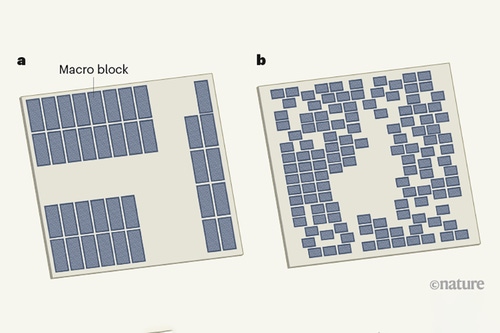
Researchers at Google have published a paper that outlines an AI system that can be used to design microchips faster than humans could.
The paper, titled ‘A Graph Placement Methodology for Fast Chip Design,’ was published in Nature earlier this week.
It outlines a method of feeding ‘floorplans’ into the model so it learns where to place aspects of chips, with the paper’s authors suggesting such automation could greatly speed up future hardware developments.
"Our method was used to design the next generation of Google's AI accelerators and has the potential to save thousands of hours of human effort for each new generation," the abstract reads.
"We believe that more powerful AI-designed hardware will fuel advances in AI, creating a symbiotic relationship between the two fields."
Chip-A-Dee-Doodah
The paper’s lead author is Azalia Mirhoseini, co-founder and lead of Google Research's ML for Systems team.
Mirhoseini previously described using an AI system in chip design, with such a system gradually learning and improving over time.
The paper was shown in pre-print on Arxiv last year, with Google’s head of AI Jeff Dean referring to it in a keynote speech during the International Solid-State Circuits Conference last February.
A year on, Mirhoseini team's latest paper fine-tunes its prior points, and reveals that the method was already used in production to design the next generation of Google’s Tensor Processing Units (TPUs).
For training, the AI system was shown 10,000 chip designs, which were then evaluated for both efficiency and performance.
Just six hours later, the system was able to design chips similar to, if not better than, ones made by humans – taking a considerably shorter time to achieve this.
The system would place larger units first, and then fill the space around them. Google’s research team found that the AI system would allow for better placement of cells and group or rearrange certain memory blocks differently to achieve superior results.
The Nature article outlining the paper suggested that failing to automate chip making would be "problematic," adding, "not only because of the associated time costs but also because it limits the number of solutions that can be explored within chip-development schedules.”
It suggested that the semiconductor industry should “redouble its interest in replicating the authors’ work, and to pursue a host of similar applications throughout the chip-design process.”
Yann LeCun, chief AI scientist at Facebook, described the paper as “very nice work” on Twitter, adding, “this is exactly the type of setting in which RL [reinforcement learning] shines.”
About the Author(s)
You May Also Like


.jpg?width=700&auto=webp&quality=80&disable=upscale)
.jpg?width=700&auto=webp&quality=80&disable=upscale)
.jpg?width=700&auto=webp&quality=80&disable=upscale)



.jpg?width=300&auto=webp&quality=80&disable=upscale)
